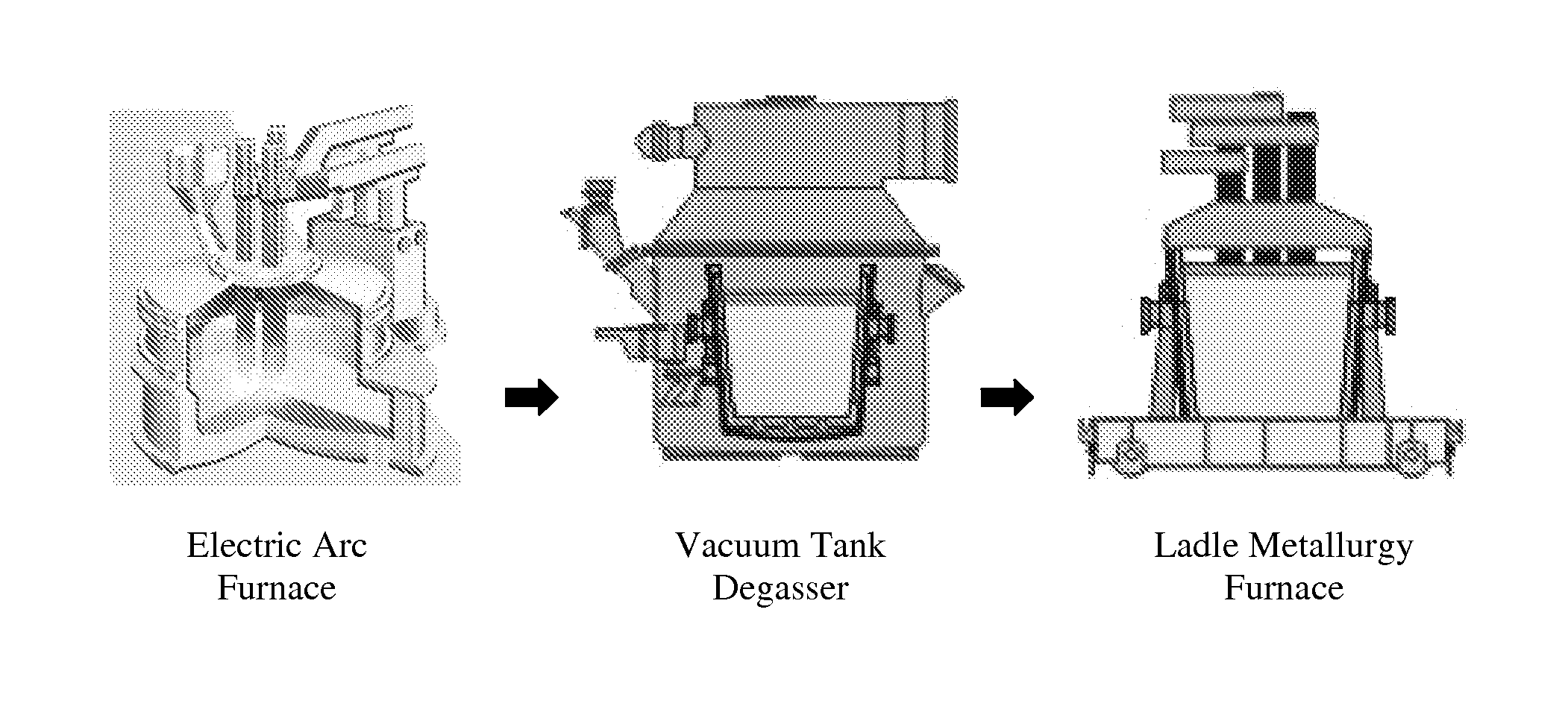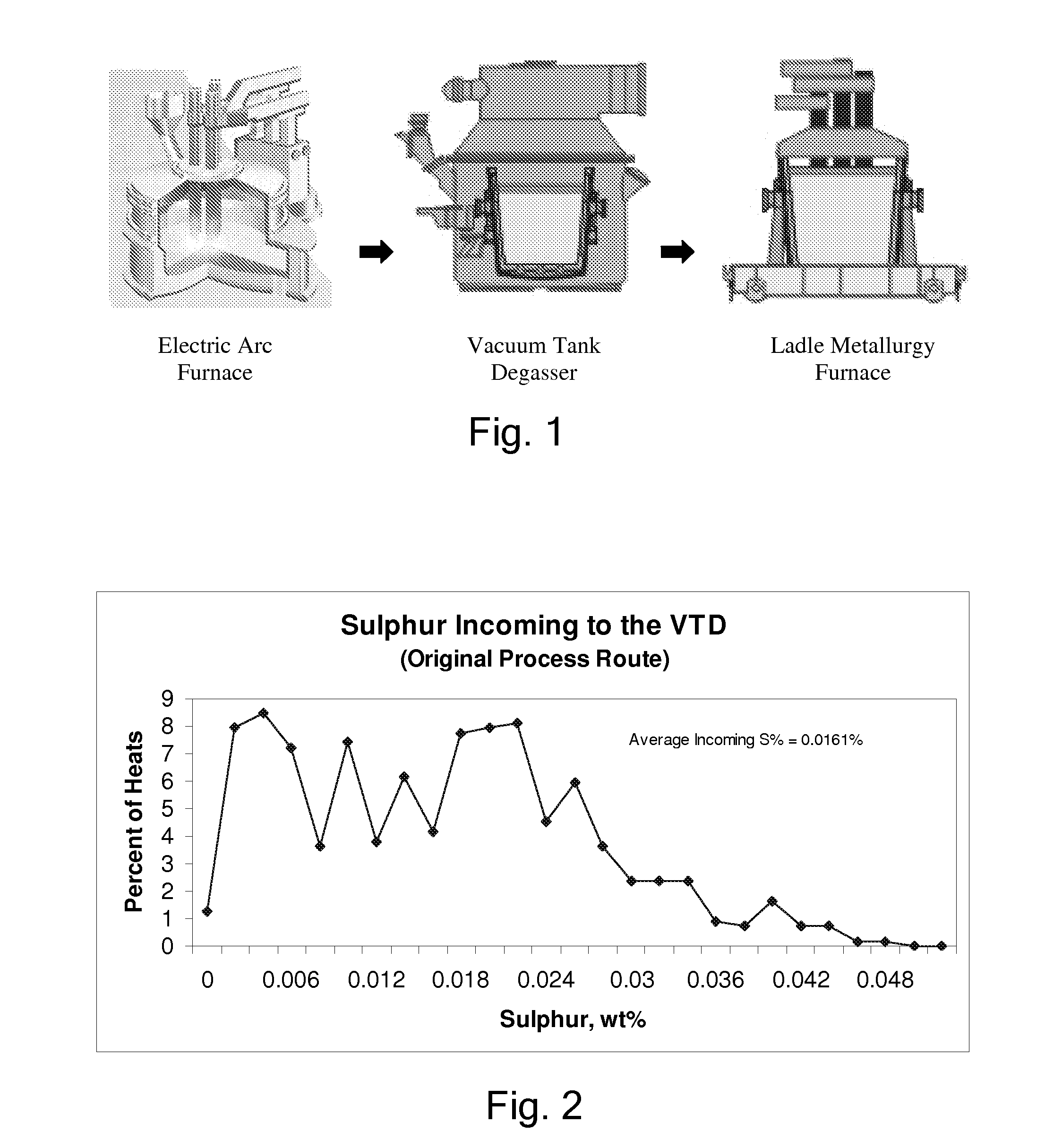Low cost making of a low carbon, low sulfur, and low nitrogen steel using conventional steelmaking equipment
- Summary
- Abstract
- Description
- Claims
- Application Information
AI Technical Summary
Benefits of technology
Problems solved by technology
Method used
Image
Examples
Embodiment Construction
[0053]The process for producing low carbon, nitrogen and sulfur steel grades is schematically shown in FIG. 1. In a process for preparing steel for casting, the steel may progress from an electric arc furnace (EAF) to a vacuum tank degasser (VTD) to a ladle metallurgical furnace (LMF) to a caster (not shown). In one alternative, the steel may progress from the electric arc furnace (EAF) to the vacuum tank degasser (VTD) to the ladle metallurgical furnace (LMF), then return to the VTD and LMF, and then continue to the caster (not shown). The steel grades produced by the presently disclosed method have low carbon less than about 0.035% by weight. The steel grade also typically has low nitrogen less than about 0.005% by weight and low sulfur less than about 0.003% or by weight less than about 0.0015% by weight.
[0054]A steel melt shop typically has one or more electric arc furnaces, such as a 120 ton (metric ton) EAF equipped with 110 megavolt-ampere (MVA) transformers. Such electric ar...
PUM
| Property | Measurement | Unit |
|---|---|---|
| Temperature | aaaaa | aaaaa |
| Temperature | aaaaa | aaaaa |
| Temperature | aaaaa | aaaaa |
Abstract
Description
Claims
Application Information
 Login to View More
Login to View More - R&D
- Intellectual Property
- Life Sciences
- Materials
- Tech Scout
- Unparalleled Data Quality
- Higher Quality Content
- 60% Fewer Hallucinations
Browse by: Latest US Patents, China's latest patents, Technical Efficacy Thesaurus, Application Domain, Technology Topic, Popular Technical Reports.
© 2025 PatSnap. All rights reserved.Legal|Privacy policy|Modern Slavery Act Transparency Statement|Sitemap|About US| Contact US: help@patsnap.com



